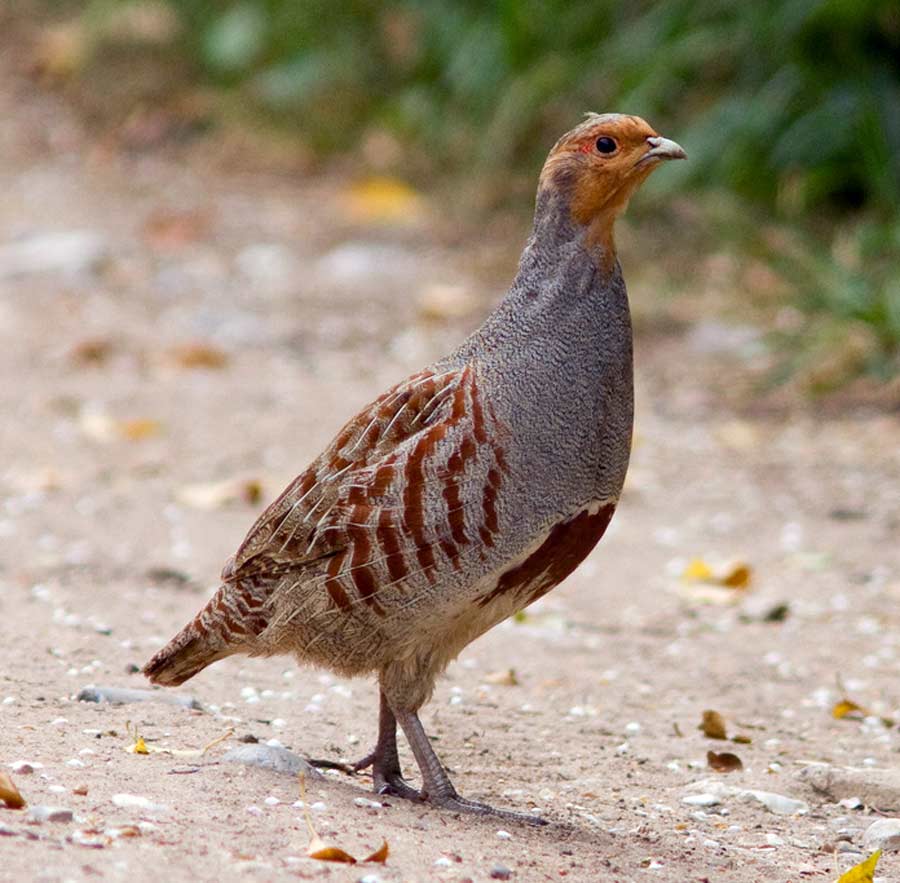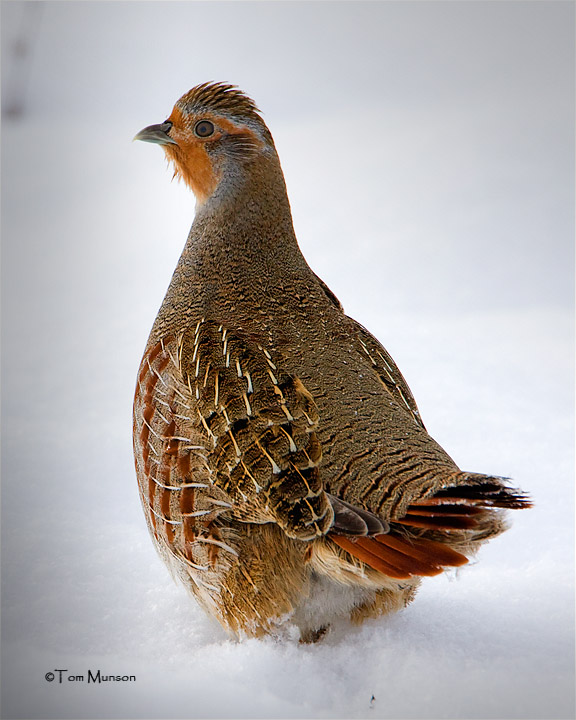
Perdix perdix
SUBFAMILY
Phasianinae (Tribe Perdicini)
TAXONOMY
Tetrao perdix Linnaeus, 1758, Sweden. Seven subspecies.
OTHER COMMON NAMES
English: Common partridge; French: Perdrix grise; German:
Rebhuhn; Spanish: Perdiz Pardilla.
PHYSICAL CHARACTERISTICS
11–12 in (29–31 cm); male 0.7–1.3 lb (325–600 g); female
0.7–1.3 lb (310–570 g). Appearance varies especially in terms of
grayer or browner plumage. Races in the western parts of the
range tend to be more rufous brown, while those in the east
are generally grayer and paler.
DISTRIBUTION
West to southeastern Europe, including south Scandinavia to
Siberia and south to Kazakhstan and western Xinjiang.
HABITAT
Native of temperate grasslands and steppe, but now mainly in
less intensively managed croplands; up to 8,500 ft (2,600 m) in
Spain and Caucasus.
BEHAVIOR
In parties of 5–25, consisting of one or more families, in overlapping
home ranges for winter; pairs form and live in more
exclusive areas in spring.
FEEDING ECOLOGY AND DIET
Weed and cereal seeds, grass, and clover leaves, with chicks
completely dependent on insects for first two weeks.
REPRODUCTIVE BIOLOGY
Usually monogamous. Nests April–June depending on locality;
clutch size usually 15–17; incubation 23–25 days; chicks fly at
two weeks and reach adult weight in three months.
CONSERVATION STATUS
Still widespread and locally abundant, but adversely affected by
intensive farming because of removal of nesting cover, herbicide
treatment for weeds, and reduction in insect availability
through pesticide applications to crops; 80% reduction estimated
overall.
SIGNIFICANCE TO HUMANS
An important game bird for hunting in Europe and United
States; flagship for conservation in lowland agricultural landscapes.
Photo Gallery of - Gray partridge




 Animalia Life
Animalia Life